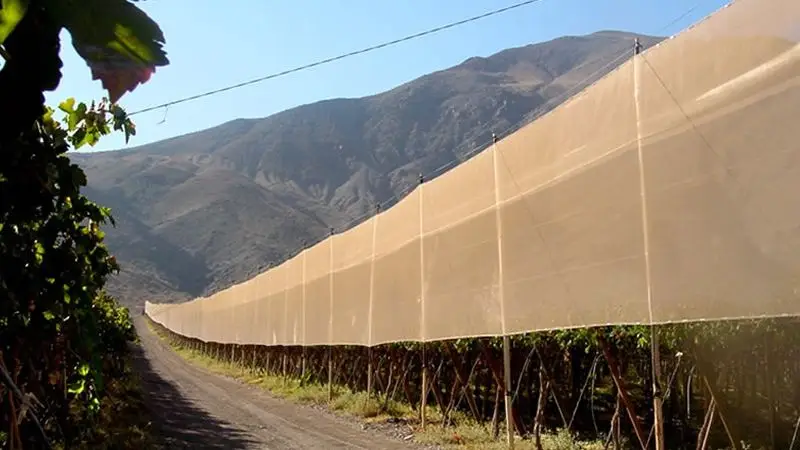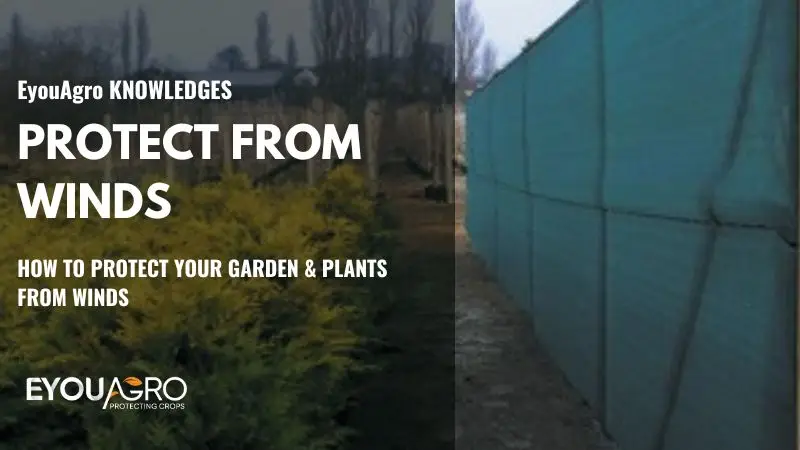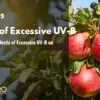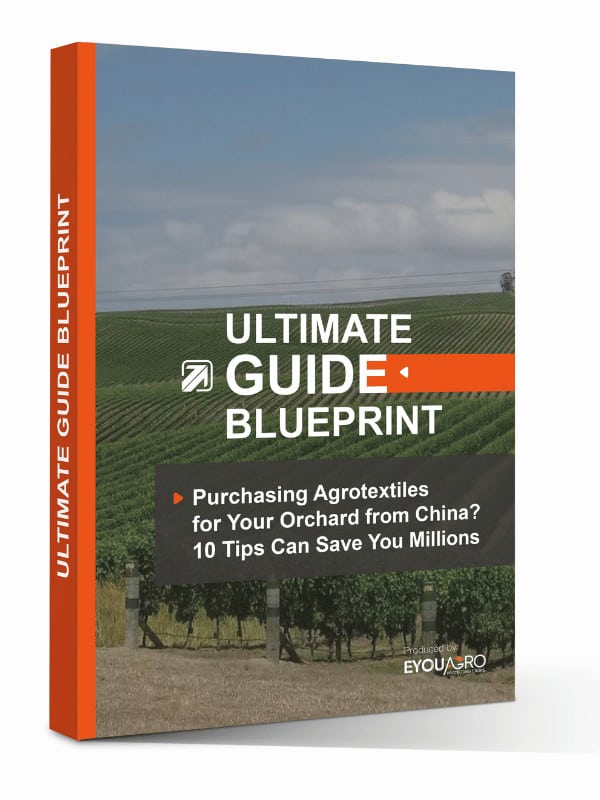If winds are strong enough to sail ships and uproot trees, imagine what they can do to your plants.
As a gardener, there is nothing as devastating as growing your garden/plants and putting in all the hard work, only for the winds to distort their growth and break them.
Fortunately, there are wind protection measures that you can employ to caution your plants from wind damage.
Thus, if you are searching for ways on how to protect your garden/plants from winds, employ some windbreak techniques like windbreak netting, windbreak fencing, and using natural windbreaks.
What is Windbreak Netting?
Windbreak netting involves using a windbreak net made out of high-density polyethylene to protect your plants, crops, and animals against harsh winds.u003cbru003eBesides protecting your garden plants against wind damage, a windbreak net will also protect your garden against soil erosion, the spread of wild seeds, and frost.
Damages Caused by Wind in Your Garden
For starters, we have plant desiccation which happens when plants encounter dry, cold winds which draw out moisture from the leaves and the stems of plants. Thus, causing them to break down and brownout.
Additionally, wind beats plants up by whipping their leaves around, tearing their tissues, and poking small holes on tender young leaves. In some instances, wind may even shred your plant’s leaves, leaving behind the impression of an unhealthy, insect manifested plant.
If you’re gardening on the sand, you are likely to experience sandblasting as a result of wind. Sandblasting occurs when the fine particles of sand and wind combine and cause stem and leaf damage.

Furthermore, wind decreases pollination since it decreases the activity of pollinating insects like bees. As a result, your plants will develop fewer amounts of fruit.
However, this is not to say that wind does not have a positive impact on plants. They aid in plant photosynthesis and gaseous exchange.
Role of Windbreak Netting
It is a no-brainer that windbreak netting plays a considerable role when it comes to wind protection.
It is fabricated in a manner that it can withstand even the strongest of winds, as long as you install it securely.
It’s capable of deflecting wind and reducing the velocity of the wind allowing only a certain percentage to get to your plants.
When to Use Wind Protection
The plants in your garden won’t always need protection against wind, and overdoing wind protection measures may do your plants more harm than good. It may cause your plants to heat up or receive insufficient sunshine.
However, here are some scenarios that will require you to provide wind protection for your plants.
After transplanting seeds
It is a no-brainer that young seedlings can be vulnerable to almost any harsh condition.
Your plant’s early growth stage is a critical phase that can break or build your plant.
Hence, it would be favorable if you worked to protect your young seedlings against strong winds and dry, cold air by employing an efficient wind protection technique like windbreak netting.
On windy, dry days
Windy, dry days are spectacular days for your plants. Dry wind increases moisture evaporation, especially if it’s moving at high speed.
The actions of dry wind will eventually dry out your plants if you do not set up an effective wind protection measure.🔄 ❓🔄 ❓
Employing measures like windbreak netting or windbreak fencing will be appropriate since they slow down the velocity of the wind and change the course of the wind.
On cold, windy nights
The adverse effects that cold howling wind can have on your plants are tremendous. Temperature drop, which happens on cold, windy nights, might cause your seedlings to die off—necessitating you to plant again.
Some appropriate wind protection measures you can use to prevent such losses would be windbreak netting and windbreak fencing. These measures will help deflect the cold wind and reduce its velocity.
On windy and stormy days
As a gardener, the best thing you could do for your plants is to check the weather forecast often. This way, you will know when the windy days and stormy days are approaching so you can take the proper steps towards plant protection.
Types of Windbreak
The three effective windbreak measures include:
Windbreak Netting
Windbreak netting involves the use of windbreak nets to protect plants from wind damage. A windbreak net is a fine mesh that is torn, fray, stretch, and sagging resistant knitted from 100% virgin high-density polyethylene.
Since wind is equally essential to plants, windbreak netting protects wind damage by decreasing wind velocity and deflecting a certain percentage of it. It does this while allowing enough sunlight and air to pass through to prevent condensation.
Windbreak Fence
If you have tall, sturdy plants that you need to protect against wind damage, a windbreak fence is a good option since even hardy plants require protection.
A windbreak fence will, in most cases, serve multiple purposes and not only plant protection against wind damage but also dust suppression and great impact resistance.
Keep in mind that even these fences aren’t immune to wind destruction. Thus, it would be best if you erected your fence securely.
Natural Windbreaks
For farmers with large plantation fields, this approach would be more efficient at guarding your plants against wind damage in comparison to a windbreak fence or a windbreak net.
This technique involves using a band of trees or bushes to deflect and reduce the velocity of the wind.
However, natural windbreaks take time before you can put them to full use, thus at some point, you’ll need to employ alternative wind protection measures.

Positioning your Windbreak Netting
During installation, ensure that you place your windbreak across the prevailing wind. In most places and countries, the prevailing wind blows in from the southwest.
However, since installing a windbreak across the prevailing wind may cause shading, opt to use a somewhat lower netting or fencing.
Purchase and Details of Windbreaks (Windbreak Netting)
You must purchase a windbreak net from a certified manufacturer like EyouAgro. If you are wondering how to do this, check online reviews. They’ll lead you to some of the best manufacturers and suppliers.
Some key details that you should put serious considerations on before you purchase a windbreak net include:
Materials
An up to standard windbreak net is made out of 100% virgin high-density polyethylene primarily because it is tough, flexible, resistant to moisture, UV, and chemicals.
Structure
A fit-for-purpose windbreak net includes a strong, durable lock stitch technology to ensure it does not fray, tear or sag with continued use.
Additionally, it should be lightweight and fitted with hems and eyelets for easy handling, fixing, and positioning.
Size
Finding yourself a good manufacturer or supplier will allow you to order a windbreak according to your specifications.
This aspect minimizes wastage due to purchasing a big windbreak net and inadequacy due to buying a small windbreak net.
Warranty
A manufacturing company for windbreak nets will, in most cases, give you a warranty period of five years. Additionally, you can contact your choice of company for more warranty details and terms.
Conclusion
Crop protection against wind damage is essential. Therefore, apply the above windbreak techniques if you are looking for ways on how to protect your garden/plants from winds.
Have you become interested in protecting your garden from wind?
If you want to know more, then visit our website at EyouAgro or drop us an email at info@Eyouagro.com.









